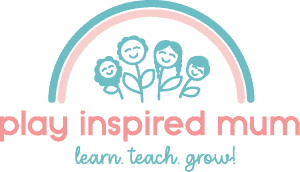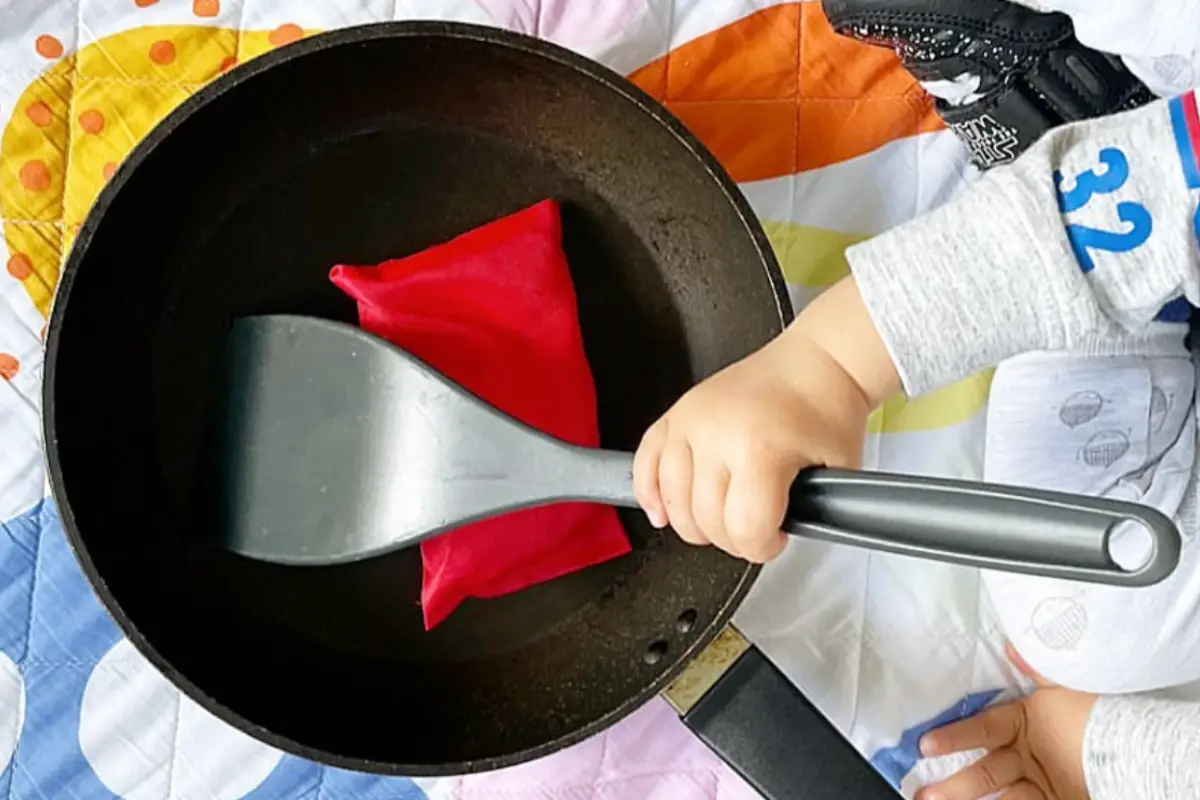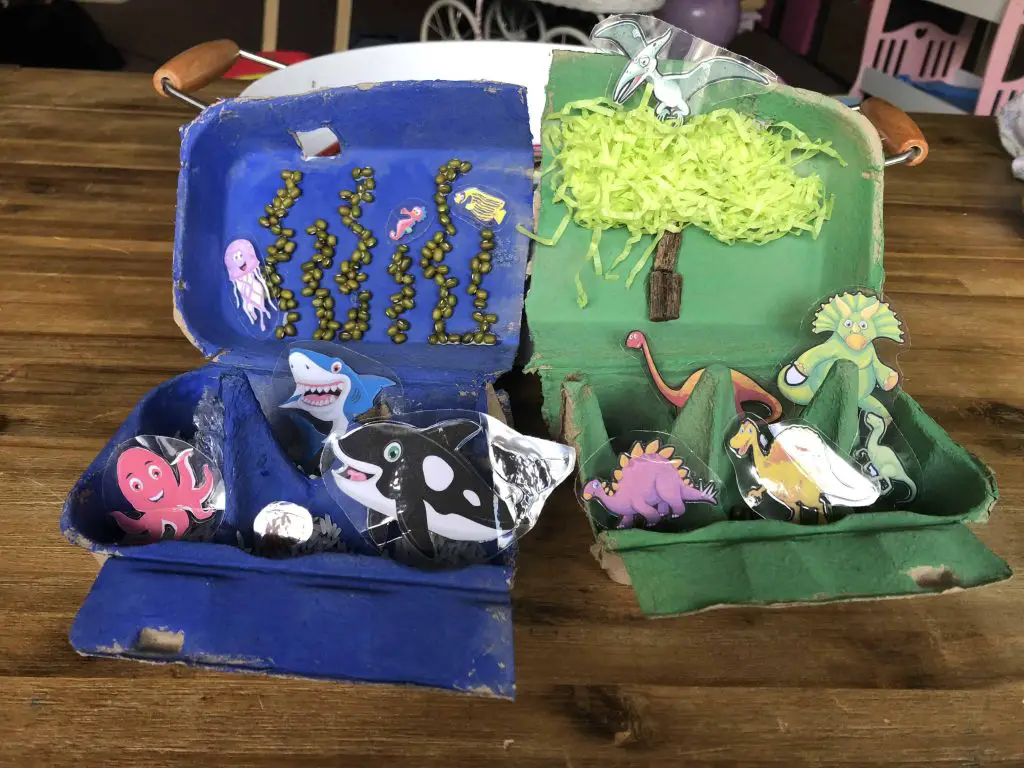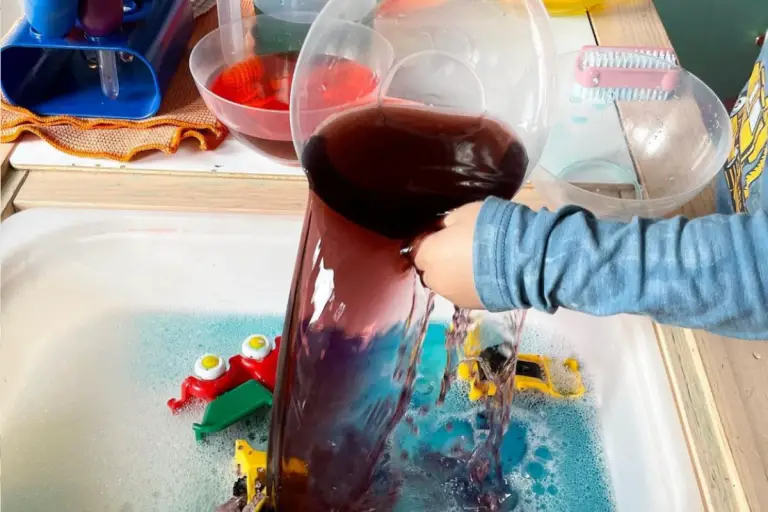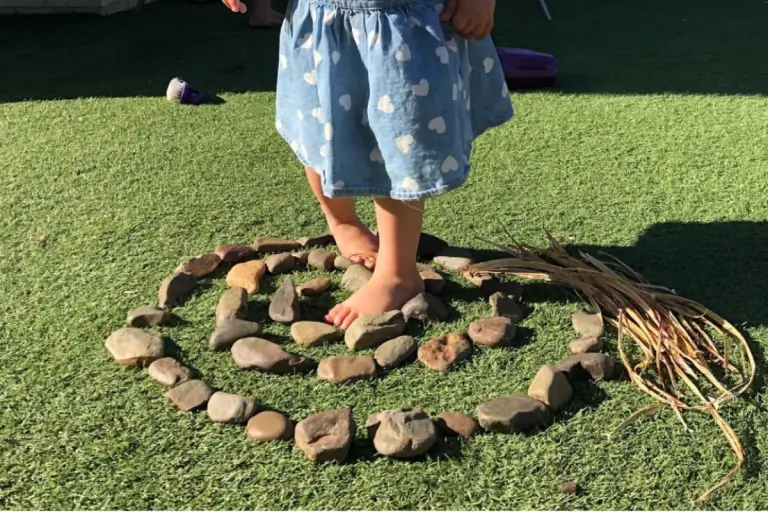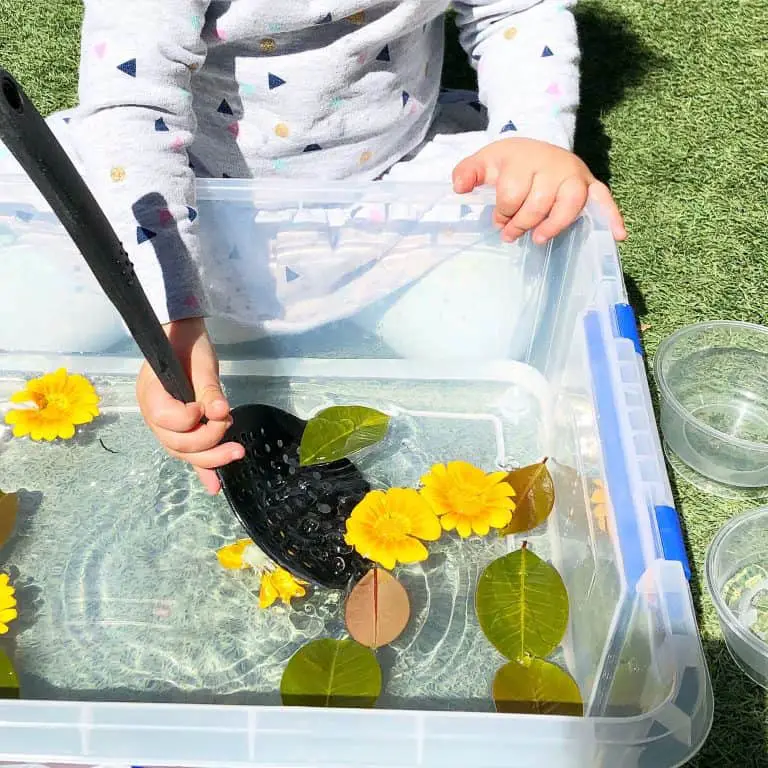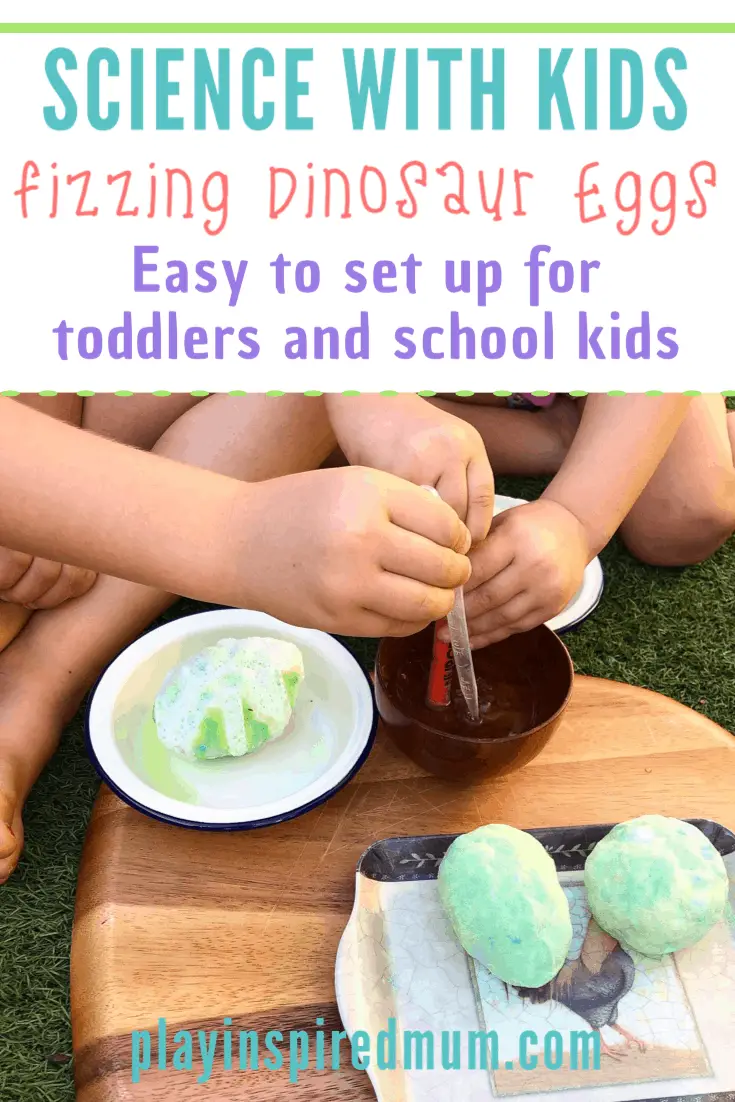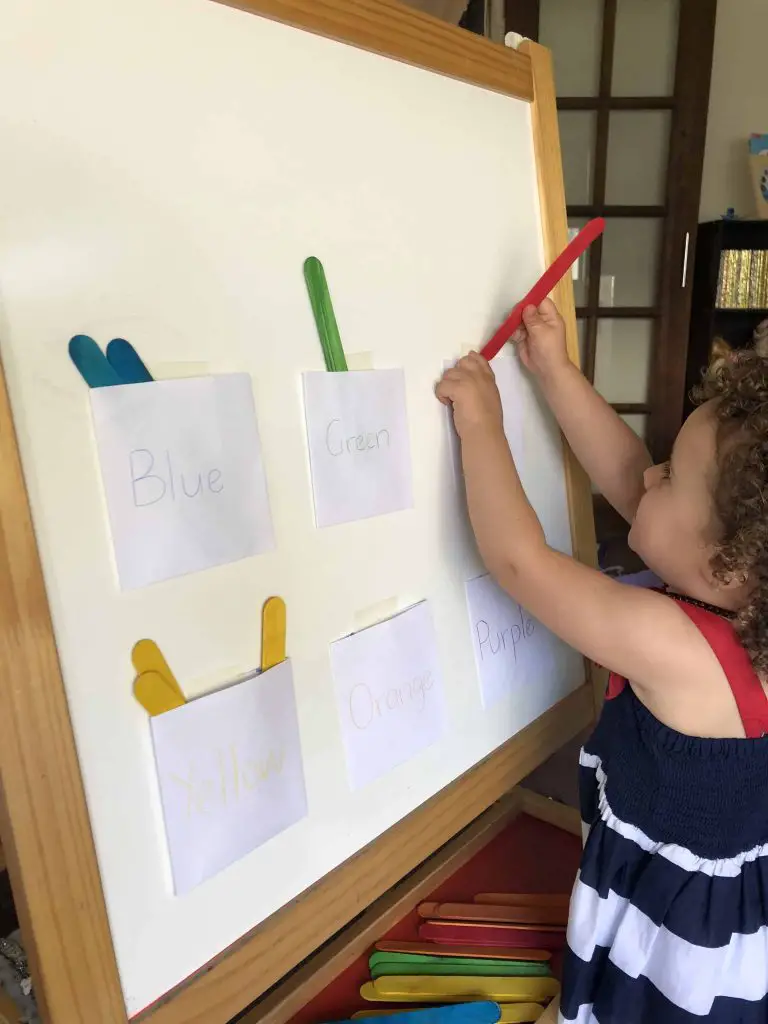Bean Bag Pancake Flip: Coordination Games for Toddlers
Disclosure: This blog contains affiliate links which I may earn a small commission from if you purchase through them, at no extra cost to you.
Have some flipping fun with a bean bag pancake flip role play activity for your toddler.
Our little mini me’s love watching and reenacting what they have seen us do over and over until they master the skills themselves.
It goes without saying that handing a spatula to a toddler over a hot stove is a disaster in the making.
So what is a safe way for your toddler to practise flipping burgers or pancakes without the risk of injury?
Flip bean bags.
And here is how we make this simple task fun, with loads of learning through play.
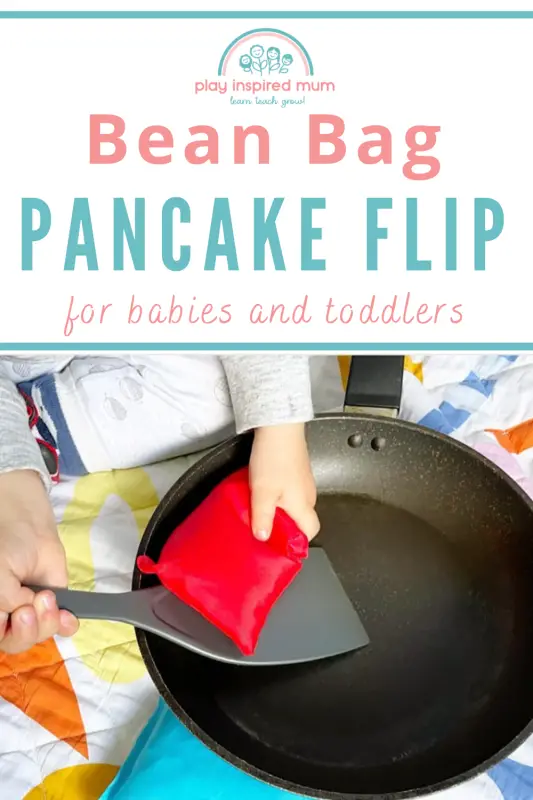
Bean Bag Pancake Flip Coordination Activities
Early childhood is a critical time for developing key skills.
Among these, hand-eye coordination and fine motor skills are fundamental.
That’s why I’ve turned to beanbag activities, specifically the bean bag flip, as a brilliant toddler play idea.
Using just a beanbag, a spatula, and a frying pan, I discovered a treasure trove of creative play.
This game, much more than a toddler activity, is a gateway to meaningful play.
It merges the challenge of coordination with the joy of role-playing.
Imagine the delight as little ones pretend they’re master chefs, flipping pancakes high into the air.
Such activities don’t just spark imagination; they lay the groundwork for skills children will use throughout their lives.
And what thrills me the most is witnessing these moments of growth unfold right in the middle of our living room.
The ‘ah-huh’ moment when they master the skill for the first time is priceless! That wide smile and sparkle in their eye is truly magical.
Why Choose Bean Bag Activities?
Over the years, I have found that bean bags stand out as the perfect prop for toddler coordination games.
Their soft texture and manageable size fit snugly in little hands, making them ideal for tiny grasps.
Unlike hard, slippery balls, bean bags won’t roll away frustratingly when dropped.
This crucial feature means kids face less irritation during play.
Hand-eye coordination and fine motor skills are pivotal in toddler development.
Engaging them in activities like flipping a beanbag with a spatula into a frying pan not only captivates their imagination but also hones these skills seamlessly.
The essence of role play, where they pretend to flip pancakes, enriches the activity.
It transforms a simple physical exercise into a creative and meaningful play session.
Such innovation encourages toddlers to explore more, pushing the boundaries of their imagination and physical abilities alike.
This activity was thought of while Mr 18 months was watching closely as I made us some pancakes one day.
After helping pour the ingredients and storing the batter, it just made sense to him that he should be a part of the cooking stage too. Toddlers with FOMO, its so hard from them.
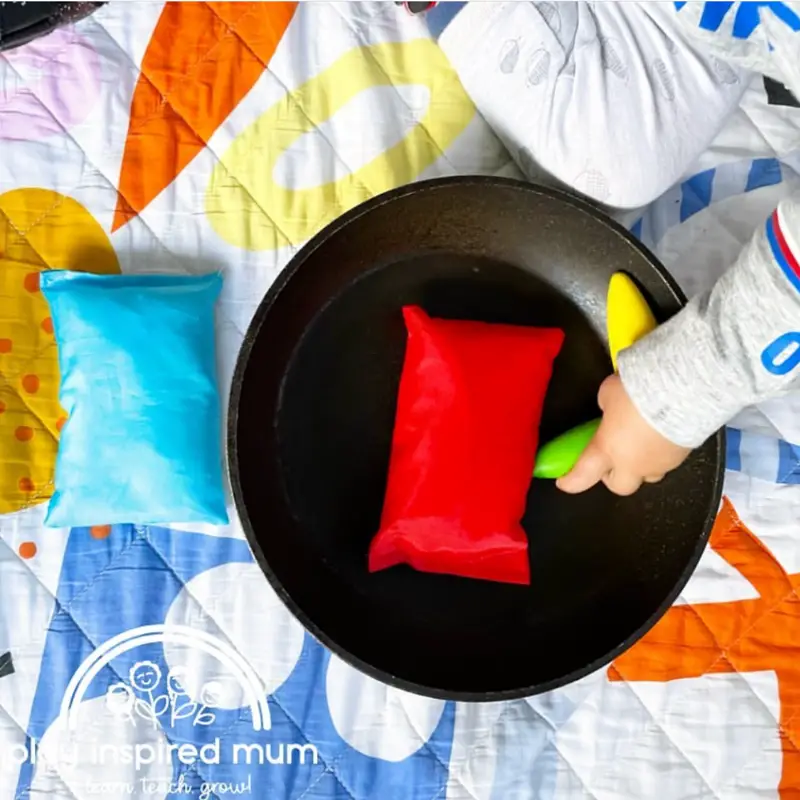
Creating Your Bean Bag Pancake Flip Station
I wondered creative ways to bolster his desire to give pancake flipping a try while refining his fine motor skills and imagination through playful activities.
Hand-eye coordination stood out as a cornerstone ability I wished to foster.
Thus, the idea of flipping bean bags, akin to pancakes, sprang to mind.
For this enriching toddler play idea, I gathered straightforward household items: a beanbag, a spatula, and a frying pan from his mud kitchen.
First, I laid the groundwork for our toddler activity.
A play mat set the boundary for our designated flipping station.
Here, safety reigned supreme, ensuring we weren’t close to any windows or breakables within reach.
I placed the frying pan on the mat, ensuring it was stable and wouldn’t easily tip over.
The spatula, lightweight and ideally sized for tiny hands, awaited its role in this creative play.
To spark the process, I introduced the beanbag as our “pancake.”
My toddler gripped the spatula with eager curiosity.
With gentle guidance, he scooped the beanbag, aiming for its grand flip into the pan.
This task, simple yet meaningful, not only honed their coordination but also let their imagination flourish.
The game evolved, showcasing a delightful blend of learning and enjoyment.
We added a couple of wooden leaves to add a sausage element to the play.
He loved it – the concentration drool stream was proof that the waterproof play mat I laid out was a necessity after all.
The Basics of Bean Bag Pancake Flip
I remember the first time I introduced my toddler to a bean bag flip game.
The simple goal was to enhance hand-eye coordination and fine motor skills.
A lit-up expression of curiosity dawned on their face.
We decided the kitchen would be our playground for the day.
A spatula and frying pan laid on the floor, ready for action.
The task seemed straightforward.
I demonstrated flipping the beanbag with the spatula, aiming for it to land within the embrace of the frying pan.
Each successful flip brought claps and giggles.
It wasn’t just about the flipping, though.
This activity unfolded as an avenue for creative play, igniting imagination and role play, pretending the beanbags were pancakes in need of a perfect flip.
It turned out to be a meaningful play session, rooted in learning through action.
The joy witnessed in those moments reinforced the beautiful simplicity of the game and how effectively it fostered essential developmental skills.
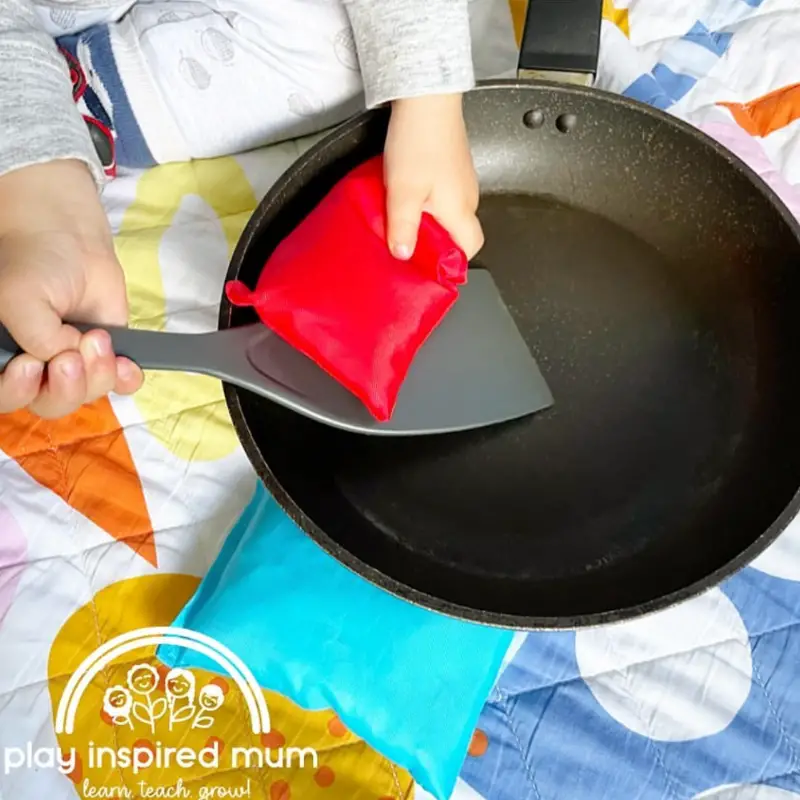
Enhancing the Experience with Role Play
I found that adding a touch of imagination took the bean bag pancake flip game to a whole new level.
I encouraged my toddler to pretend the bean bag was a pancake.
This simple idea sparked so much joy and creativity in our play.
We had a spatula and a frying pan ready.
The goal was to flip our “pancake” into the frying pan, but the fun didn’t stop there.
Role play transformed this activity from a mere hand-eye coordination exercise into a rich, meaningful play session.
It wasn’t just about flipping the beanbag anymore.
My toddler was cooking breakfast for us, deciding if the pancake needed more time to “cook” or if it was ready to be served.
This scenario engaged not only fine motor skills but also bolstered their imagination and understanding of the world around them.
Through pretending, they practiced the roles they see in daily life, enhancing their ability to engage in creative play and develop their story-telling skills.
Safety and Supervision Tips
I found that safety always comes first, especially when toddlers dive into playtime adventures like flipping beanbags.
We must supervise these little chefs closely to avoid any unintended mishaps.
During these playful moments, ensuring the right equipment is crucial.
I opted for soft, lightweight beanbags, ensuring they pose no risk even if the game gets a tad too lively.
As for choosing utensils, a plastic spatula and a non-heatable frying pan made the perfect duo.
This ensured that our imaginative pancake flipping was not only engaging but also completely safe.
Constant vigilance became my mantra, allowing the toddlers to explore and enjoy without boundaries yet within a watchful embrace.
To bolster safety, I always checked the play area for any potential hazards.
Slippery surfaces could easily dampen the fun, so a soft mat underfoot provided a secure flipping zone.
This attention to detail allowed for an enriching experience, fostering both their hand-eye coordination and their budding imaginations, all within the comforting bounds of safety.
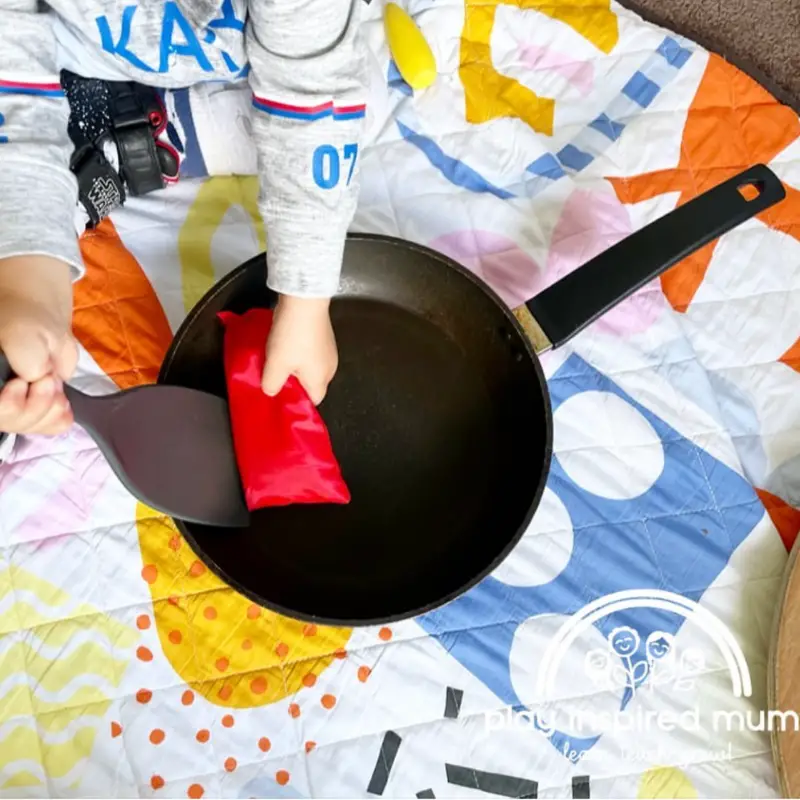
Extensions and Variations
I found that sticking with the same routine would have led us to boredom.
I decided we needed to mix things up a bit.
One approach involved adding more bean bags for an extra layer of challenge.
This not only kept their attention but also improved their hand-eye coordination and fine motor skills.
We also experimented with changing the flipping distance.
It required a keen eye and a steady hand, making the play even more engaging.
Role play turned out to be a fantastic addition to our activities.
We pretended the bean bags were pancakes, and the spatula and frying pan weren’t just tools but magic wands in our little diner.
This infusion of imagination and creative play made the experience incredibly meaningful.
It wasn’t just about flipping bean bags anymore.
It was about cooking up stories and adventures, fostering a love for role play alongside developing physical skills.
Adjustments were always on the table, depending on the day’s vibe.
Sometimes, we brought the frying pan closer or further away to test their accuracy under different conditions.
The variations kept my toddler intrigued and motivated.
We switched out the spatula, using different shapes and sizes.
Through this, I discovered the power of adapting and evolving our play to continuously fuel their curiosity and growth.
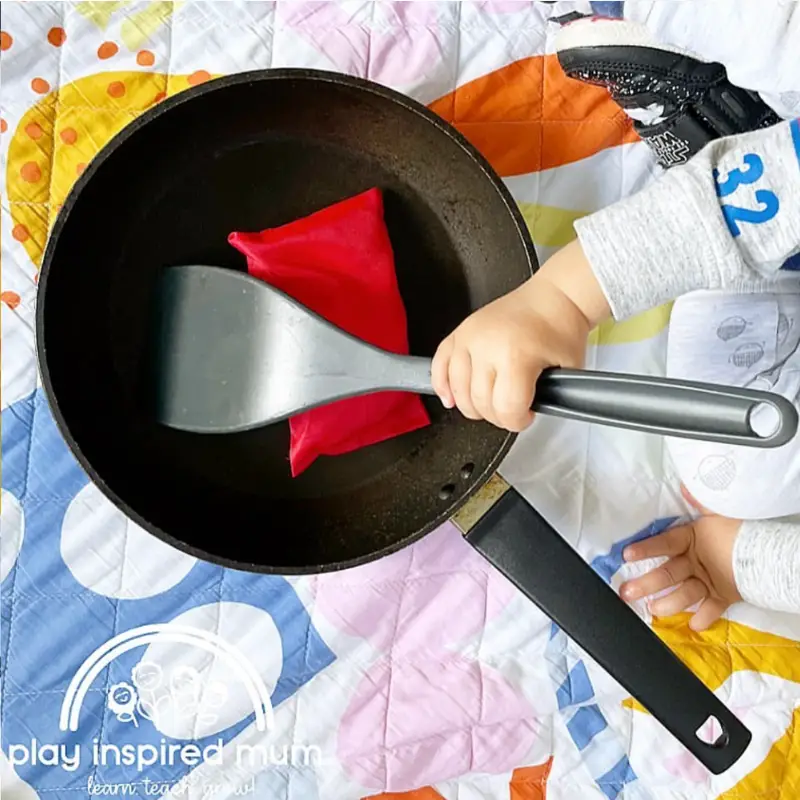
From Flips to Future Skills
I watched in amazement as my toddler, spatula in hand, expertly flipped a beanbag into the frying pan.
This activity, more than just a toddler play idea, was a masterclass in hand-eye coordination wrapped in the guise of making imaginary pancakes.
The laughter and concentration on their face spoke volumes.
Beanbags, simple and unassuming, had become tools of learning and growth.
The skills we were nurturing went far beyond today’s fun.
Every successful flip, every miss and try again, were building blocks for fine motor skills essential in everyday tasks.
I imagined a future where these foundational moments at play translated into my child confidently participating in sports, showing prowess in the art of cooking, or simply being able to handle tasks that demand precision and coordination.
The role play integrated into our beanbag flipping adventure was not just about creativity.
It was a meaningful play that fostered imagination, where a simple beanbag transformed into a pancake and a toddler into a chef.
This creative play was setting the stage for thinking outside the box, for seeing the world not just as it is but as it could be.
The beauty of these activities lies in their simplicity and the powerful outcomes they foster, making each flip, toss, and catch a step toward a future rich in skills and possibilities.
As we cleaned up, the spatulas and frying pans put away, the joy of learning through play lingered.
This beanbag game, a delightful toddler activity, had subtly prepared my child for future challenges.
It was a gentle reminder of how meaningful play can create lasting impacts, shaping skills that reach far into a future we can only imagine.
